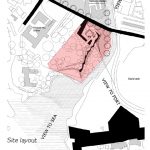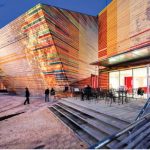-
Dynamic Glass Or Electronically Switchable Glass
October 2012

When building interiors offer abundant daylight and views of the outdoors, the people inside thrive. Research proves it. Workers are more productive, students learn better, and patients heal faster.
Artificial light, glare and overheating have the opposite effect. Traditional solar control methods such as shades and blinds, block the view, are costly to install and maintain and are not very sustainable.
Dynamic glass lets you embrace natural light and stay connected to the outdoors while preserving the comfort of the indoor space. You enjoy all the benefits of sunlight, without the drawbacks.
Dynamic glasses also blocks 98 percent of the sun’s rays that cause fading of furniture, carpets and valuable artwork. It allows sunlight in, but can be tinted when needed, blocking the glare and drastically reducing heat gain. With the use of dynamic glass one can preserve the view and connection to the outdoors for the building occupants.
Dynamic glasses are similar to typical double glazed units with a low-E coating. One face of the glass pane is sputter coated with layers of metal oxides in a proprietary process. Electro-chromic coating consists of up to five layers of ceramic material. Applying a low voltage of electricity darkens the coating as lithium ions and electrons transfer from one electro chromic layer to another electro-chromic layer. Reversing the voltage polarity causes the ions and electrons to return to their original layer, causing the glass to return to its clear state.These are produced into two types, one which can be instantly turned on and off and one that can be tuned in more gradually.
A low voltage connection is required to operate this system. The control mechanism can be similar to a dimmer in a wall or connected to the building automated system.
Dynamic glass can be used as window panes or as sky lights. These products are used in show rooms, healthcare facilities, offices, consultation rooms, partition between the hotel room and bathroom, universities and skylights.











